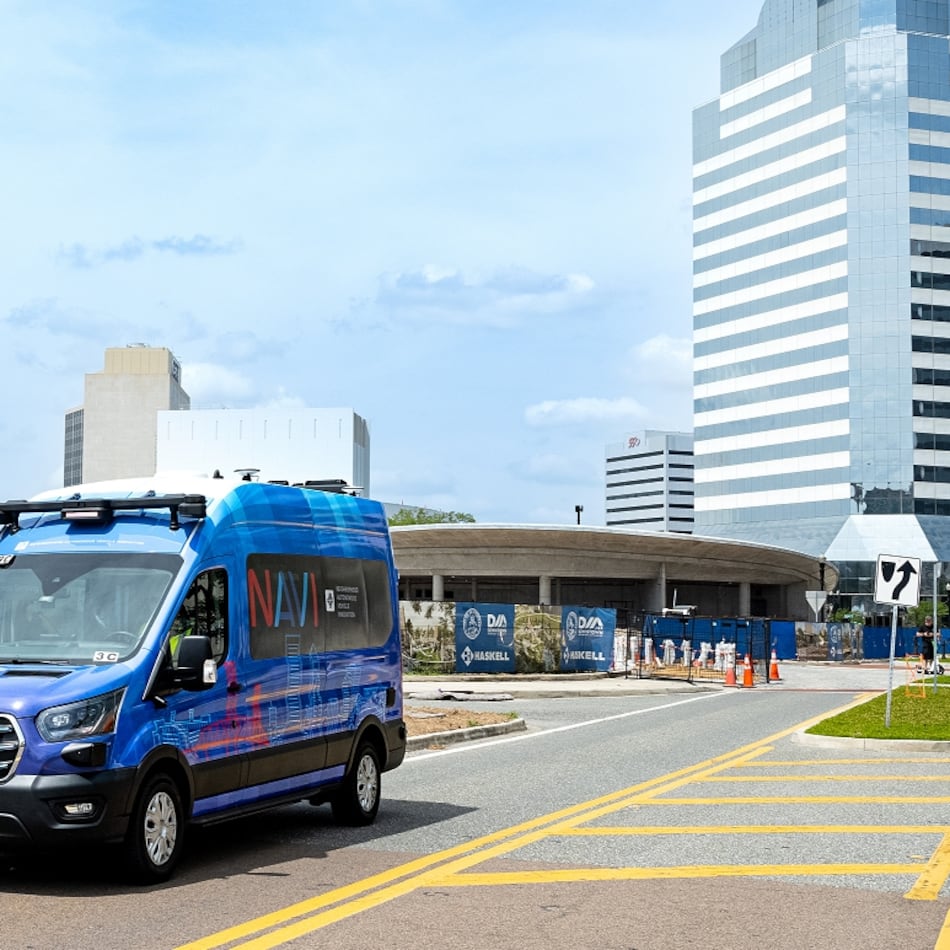During the 2022 frenzied, pandemic-era home buying spree of cash offers, waived inspections and offers over asking price, high school teachers Anslie and Stephen Spitler took their first tentative steps into a sizzling metro Atlanta housing market.
Like other middle-income Atlantans at the time, the couple faced intense competition and rising interest rates in a Southern city once considered among the nation’s most affordable. They pounced on a three-bedroom, single-family home in Lawrenceville as soon as it was listed.
“We put in an offer that night. There were at least 10 other offers,” Stephen Spitler said.
It wasn’t long before the couple was second-guessing the purchase, realizing they wanted more room for their growing family. But by 2024, interest rates and prices had risen dramatically and showed little sign of coming down.
The Spitlers were victims of what’s become known as the “lock-in” effect. They had a rate of 4.9% but saw 7% rates when they started looking again, making a move seem more or less impossible.
That’s when Anslie Spitler went down an internet rabbit hole, discovering a little-known home loan called an assumable mortgage.
In essence, a mortgage assumption would mean the Spitlers could get into a new home by taking on the seller’s existing mortgage, including the remaining balance, loan term, monthly payment and interest rate — turning back the clock to a time of historically low rates.
“My husband was more skeptical,” Anslie Spitler said. “He was like: ‘This isn’t real.’”
There were challenges to overcome, for sure. They would need to come to the table with a large down payment or get a second mortgage at a higher rate to cover the seller’s equity. But the Spitlers soon realized that if the seller had a 2% rate on the original mortgage, they would get that, too.
In the summer of 2024, they assumed a loan on a $435,000 house in Hoschton in Jackson County, relocating to a 2,600-square-foot home on a sleepy cul-de-sac with sculpted shrubs and a large backyard. It has more than enough room for their two boys, Luke and Max, baby girl Rose, and the family dog, Violet.
The Spitlers’ realtor, former church pastor Kevin Hosner of Chapman Hall Realtors, said an assumable mortgage gave the family a way back into a metro market where home prices have risen more than 50% in five years.
In May 2020, the typical home value was $260,000. By May 2025, it had climbed to $390,000, according to Zillow data.
“Having an assumable mortgage was life-changing for them,” Hosner said.
The real estate agent works with a New York-based firm called Roam and has helped dozens of buyers through the startup’s listings platform, which guides them through the entire assumable process until they get the keys to their new home.
Raunaq Singh, Roam’s founder and CEO, said he learned about assumable mortgages after reading the fine print of a real estate contract and found they still applied to most government-backed mortgages, like Federal Housing Administration and Veterans Affairs home loans.
“Imagine you’re walking across a crack in concrete, and you see a little sprout of grass, and you pull it and pull it, the bricks fall apart, and you start to see there’s a whole garden,” Singh said.
As Singh discovered, mortgage assumptions were the norm until the early 1980s, when mortgage rates for a 30-year fixed mortgage peaked at around 16%.
They became rarer after the passage of a federal law during Ronald Reagan’s administration, the Garn-St. Germain Depository Institutions Act, which allowed lenders to enforce due-on-sale clauses and repayment of the loan in full upon sale.
The 1982 law made most conventional loans non-assumable.
Credit: Rayon Richards
Credit: Rayon Richards
How it works
Now assumable mortgages are making a comeback because they offer a lower monthly payment, as well as tens of thousands of dollars in savings across the life of the loan.
But complications can ensue.
Buyers are limited to a smaller pool of government-backed mortgages, which means they can expect to make some compromises — especially if they want a particular style of home or want to live in a specific neighborhood or school district.
People locked in to low interest rates may be less likely to put their homes on the market in the first place. Even if they do list their home for sale, they may not want a buyer to assume their loan.
As of late May, the majority of Roam’s Georgia listings were in the metro Atlanta region, with about 2,300 homes. Overall, Roam had roughly 3,400 homes listed in the state. In contrast, the Georgia Multiple Listing Service has more than 20,000 active listings in the 12 core counties of metro Atlanta.
The high cost of homes could also shatter expectations.
“There are going to be bumps in the road,” Anslie Spitler explained. “The down payment is going to be extremely large. It’s a lot compared to other loans that allow you to put down 3.5%.”
Buyers assuming a loan must somehow bridge the gap between what the seller bought their home for and how much it is worth today. If the purchase was $300,000 in 2020 but the home is now valued at $400,000, a buyer would have to bring an additional $100,000 to the table.
“The problem is, these assumptions are not tailored to low-down-payment borrowers,” said Chris Gardner, a managing member of the Los Angeles-based consulting firm FHA Pros, which helps clients with mortgage assumptions. “It really is left to the people who have more cash to assume these, rather than the first-time homebuyer.”
The Spitlers narrowed the gap by taking out a second mortgage loan. The catch? Though the assumable mortgage was 2.5%, the second mortgage loan was about 11%. The blended interest rate on the house ended up at about 4.5%.
From the Spitlers’ point of view, that is still a win, considering today’s interest rates — and the rate on their previous home. But the math might not work out for everyone, Gardner said.
“Do the buyers have the gap money? If they don’t, can they get a second [mortgage]? If they can get a second, does the rate blend even make it worthwhile?” he said.
For many people, buying a home is the most expensive financial decision of their lives. An assumption can add more uncertainty to an already nerve-shredding experience. A conventional mortgage typically could take 30 to 60 days, while a cash offer could be done in two weeks or less, according to Zillow.
The Roam website says that without its help, it can take about 180 days, on average, to close. According to Roam, it coordinates with buyers and their agents to avoid setbacks, disappointments and aborted sales.
Singh said Roam’s transactions usually take about the same time as a standard home sale and that if it does not close within 45 days, it will pay the seller’s mortgage until it is done. With Roam, people can put as little as 5% down, according to the startup.
Though some lenders and agents are more savvy than others, Gardner said delays and foot-dragging are common because many in the industry are more familiar with standard loans than assumptions. This adds more stress to the transaction than a cash or conventional sale, he said.
“The assumable side adds a lot of unknowns and uncertainty because people have no experience with it,” Gardner said.
Like Roam, Gardner cautions against buyers going it alone, even though the help comes at a cost.
FHA Pros charges a flat fee of $1,500 regardless of the size of the loan, Gardner said. Roam charges 1% of the purchase price. For a $400,000 house, that would be $4,000 — before other fees associated with home purchase, including closing costs, which typically run into the thousands of dollars for a standard loan or second mortgage.
Roam client Peter Dawoud was in the same shoes as many Atlanta homebuyers when he entered the market in early 2024. He was hoping to find a home for about $300,000, well below the median home price in the metro region. He had resigned himself to buying something that would need some work, which he expected would cost even more money down the road.
“My hopes were not high,” he said.
At first, Dawoud thought he would take on a higher payment and refinance when, at some undefined point in the future, interest rates came down. But after linking up with Roam and Hosner, he found a three-bedroom townhome in Marietta. He said anyone thinking of doing the same should expect delays.
According to Dawoud, it took him four months to close on his house in September 2024. The loan servicer was California-based mortgage lender LoanDepot. He said he had to send documents by mail and sign them by hand.
“It just takes a lot of time when you start talking to the lender, until you get to the finish line,” Dawoud said.
It was overwhelming, but the payoff was worth it, he said, noting that he did not need a second mortgage because he could tap into savings, and the previous owner did not have much equity.
Singh knows firsthand how difficult it is to pay for a home. He is still renting in New York and said the affordability challenges in that city were another reason he founded Roam.
The company expanded into the Atlanta market in late 2023.
When he is ready to buy, Singh said, he will do so through an assumption via Roam. The home loan is “a generational opportunity” for Atlantans to realize their dream of buying a home, he said.
“Five, six years ago, there used to be a strong narrative about Atlanta, that it was amongst the most affordable places in America to live,” Singh said. “Now every time I visit, I find fewer and fewer people think that. That makes me sad.”
About the Author
Keep Reading
The Latest
Featured





